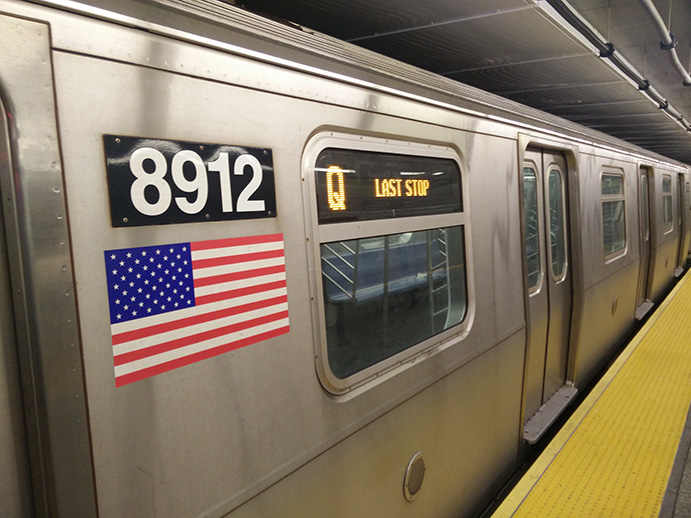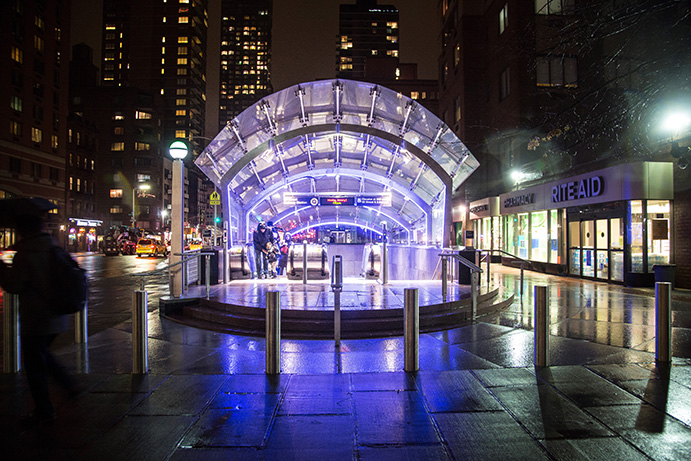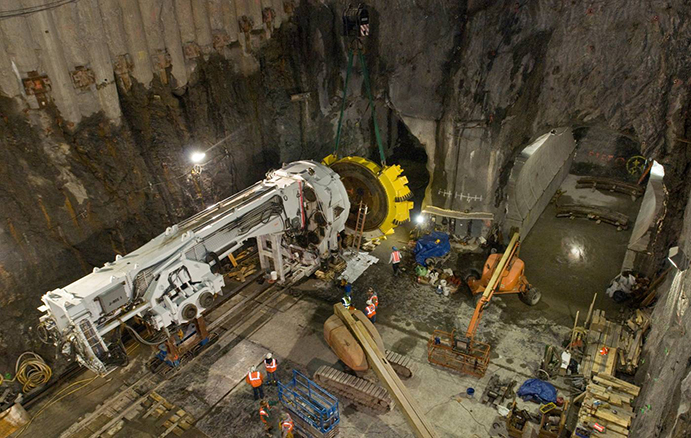New York City had to wait nearly 100 years for the Second Avenue Subway
The first day of 2017 brought New Yorkers a belated Christmas gift, one that their city had been promising for almost a century. First proposed in 1919, the Second Avenue Subway (SAS) was part of a plan to accommodate the post-war explosion in passenger numbers using the system, which had risen to 1.3bn by 1920.
At the time, the Upper East Side was served by elevated trains on both Second and Third avenues. Initial plans called for the demolition of both, and a brand-new subway line connecting Harlem in the north to the financial district in the south, as well as spurs extending out to Brooklyn, Queens and the Bronx. But by the time both ‘Els’ had disappeared mid-century, there was still no sign of the SAS. Work eventually got underway in the 1970s, but New York’s fiscal crisis soon saw it grind to a halt. The SAS became ‘the line that time forgot’, an in-joke among New Yorkers: “I’ll pay you back that money when they finish the Second Avenue Subway.”

Thankfully, the 1990s and 2000s saw an upturn in the city’s fortunes, leading to new plans for the line’s completion. Carried out over four phases, the project would be the biggest expansion of the subway system in 50 years. In 2007, a consortium of Schiavone/Shea/Skanska (S3) was awarded the tunnelling contract for phase one. The first phase would see three new stations constructed, dotting the Upper East Side at 72nd, 86th and 96th streets, and relieving pressure from the Lexington Avenue line: the busiest in the entire country, carrying around 1.3m passengers each day.
“At 92nd Street to 95th Street we built a large open-cut launch-box,” explained Gary Almeraris, Skanska USA Civil vice-president of operations, using a map outside the new 72nd Street station. “That was going to be part of the future station and the interlock, but we also used that to launch our tunnel-boring machine [TBM].”
Just south of the launch box, the engineers encountered a problem. Rather than the hard rock the team had anticipated, they found a section of mixed soil and rock, which the TBM couldn’t drill without risk of collapse.
“The rock profile had a big dip in it for almost 150ft, a big dip where the rock dropped off,” said Almeraris. “Now, that’s the tunnel on the east side. We went over to the tunnel on the west side, and found rock. So we made a decision with the MTA [Metropolitan Transport Authority] to slide the machine over and drive this [west] tunnel first.”
Deep freeze
In the meantime, they had to figure out what to do with the east tunnel. They decided to freeze a 147ft (45m) section of soil/rock mix before boring through. Vertical holes were drilled from the surface in a roughly 1 x 1m pattern, and a chill plant used pipes to circulate brine through the ground at -27˚C. This essentially turned the zone into a giant block of ice, allowing the TBM to safely bore through. It was a technique Almeraris had previously used on the Big Dig in Boston, and also in Queens. But it came with a price tag.
“It’s an expensive solution,” he said. “But you’ve got to be careful… you’ve really got to do it and get out. You can’t procrastinate.”
“Behind us, because you have time before it’ll melt, we installed steel rings, and we put up shutters and basically filled it with concrete, and mined our way through that zone. We mined through there working 24/7.”

While still at college in the 1970s, Almeraris had worked on a Midtown tunnel that had sat unused for decades as the money ran dry. Now, he was leading a crew to help breathe new life into it. From the uptown launch-box, the team mined down to 63rd Street, where the pre-existing tunnel ran west from Lexington Avenue. Cutting across Manhattan through the southeast corner of Central Park, it then curved south down Seventh Avenue towards Times Square, New York’s bustling epicentre. To get to the tunnel, the team first had to perform a delicate manoeuvre at a station in use around the clock.
“The station at 63rd Street was built with the intention of a connection to the future Second Avenue line, so they made a wide underground cavern, and split it in half with a dividing wall,” said Almeraris.
Drilling through
Employing methods similar to Crossrail in London, the team drilled through to the dormant section of 63rd Street station, while F trains serving Queens passed just a few feet away behind the dividing wall. A major milestone was reached in September 2011 when the TBM broke through the station’s bellmouth, marking an end to the tunnelling. Laying the track and fitting out the stations would take several more years, however, complicated by Manhattan’s high-density population.
“A big thing on this programme – on Second Avenue in particular – was community,” said Almeraris, who worked on construction of the 86th Street station for Skanska once the tunnelling was completed.
“The people are great, but they don’t want you shaking up their houses and taking their parking spaces… you had to make sure all the businesses had access. You had to move their garbage for them. The MTA went out of its way to try and keep them well informed. We actually had tunnel tours.”
Often led by Michael Horodniceanu, MTA Capital Construction president (known to all as Michael H, and usually seen sporting a bow-tie), the tours involved bringing local residents down to see the work, helping the community engage with the project.
“When the people took the tour, they took ownership of the subway. It was amazing,” said Almeraris.

The new stations are bright and airy, featuring full-length mezzanines and island platforms. For now, they’re served by a rerouted Q train, which comes in from Coney Island in Brooklyn, and travels up Broadway once it reaches Manhattan. The express service connects Midtown West with the Upper East Side for the first time, and the MTA recently announced that daily passenger numbers have already swelled to 176,000, a 42 per cent increase from January.
“This is the big reliever line,” said Almeraris. “It’s relieving a lot, but it’s going to relieve more, and improve the community of Harlem with phase two.”
Phase two – at least 10 years away – will see the line extended north to 125th Street, then turning west to connect with the Lexington Avenue line and Metro North at a massive new station that will swallow a sizeable chunk of the estimated $6bn budget.
“It’s going to have three stations,” explained Almeraris. “106th Street, 116th Street, and the mother of all stations at 125th Street. This station is going to be 1,370ft [418m] long.”
Phase one came in on budget at $4.45bn, but with just 3.2km of new tunnels, this makes it substantially more expensive per kilometre than Crossrail. Manhattan’s congested underground infrastructure makes building new subways difficult, and that translates to the balance sheet. This, in conjunction with potential issues around land acquisition, has led to questions being raised over the completion of phases three and four, which would involve the construction of 10 new stations, as well as about 8.5km of new track, and the introduction of a new T-line service running the length of Manhattan. For now though, Almeraris is happy to reflect on what’s been achieved – the birth of a brand-new subway line for New York, carved right through the heart of the city that never sleeps.
“In the four-and-a-half million man hours, we didn’t have any life-changing injuries for anybody. That’s probably the thing I’m most proud of.”




Nanogenerator consumes CO2 to generate electricity
Whoopee, they've solved how to keep a light on but not a lot else.